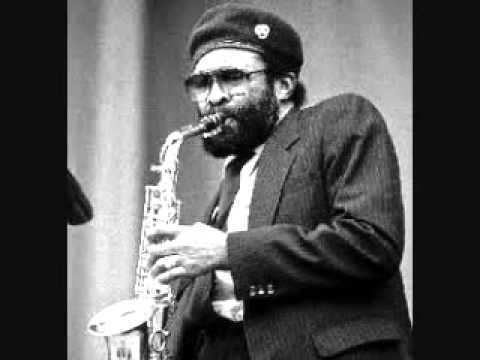Years active 1958–2009 Name Hank Crawford | Role Songwriter | |
 | ||
Birth name Bennie Ross Crawford, Jr Born December 21, 1934 ( 1934-12-21 ) Genres R&B, Hard bop, Jazz-funk, Soul jazz Occupation(s) Saxophonist, Songwriter Instruments Alto/Baritone Saxophone, Piano Albums | ||
Hank crawford the christmas song merry christmas to you kudu records 1972
Bennie Ross "Hank" Crawford, Jr. (December 21, 1934 – January 29, 2009) was an American R&B, hard bop, jazz-funk, soul jazz alto saxophonist, arranger and songwriter. Crawford was musical director for Ray Charles before embarking on a solo career releasing many well-regarded albums on Atlantic, CTI and Milestone.
Contents
- Hank crawford the christmas song merry christmas to you kudu records 1972
- Hank Crawford Sugar Free
- Biography
- As sideman
- References

Hank Crawford - Sugar Free
Biography

Crawford was born in Memphis, Tennessee. He began formal piano studies at the age of nine and was soon playing for his church choir. His father had brought an alto saxophone home from the service and when Hank entered Manassas High School, he took it up in order to join the band. He credits Charlie Parker, Louis Jordan, Earl Bostic and Johnny Hodges as early influences.
Crawford appears on an early 1952 Memphis recording for B.B. King with a band including Ben Branch and Ike Turner.
In 1958 Crawford went to college at Tennessee State University in Nashville, Tennessee. While at TSU, he majored in music studying theory and composition, as well as playing alto and baritone saxophone in the Tennessee State Jazz Collegians. He also led his own rock 'n' roll quartet, "Little Hank and the Rhythm Kings". His bandmates all thought he looked and sounded just like Hank O'Day, a legendary local saxophonist, which earned him the nickname "Hank". This is when Crawford met Ray Charles, who hired Crawford originally as a baritone saxophonist. Crawford switched to alto in 1959 and remained with Charles' band—becoming its musical director until 1963.
When Crawford left Ray Charles in 1963 to form his own septet, he had already established himself with several albums for Atlantic Records. From 1960 until 1970, he recorded twelve LPs for the label, many while balancing his earlier duties as Ray’s director. He released such pre-crossover hits as “Misty”, “The Peeper”, “Skunky Green”, and “Whispering Grass”.
He also has done musical arrangement for Etta James, Lou Rawls, and others. Much of his career has been in R&B, but in the 1970s he had several successful jazz albums, with I Hear a Symphony reaching 11 on Billboard's Jazz albums list and 159 for Pop albums.
David Sanborn cites Crawford as being one of his primary influences. Crawford is recognized by saxophonists as having a particularly unique and pleasing sound. In 1981, he featured, with fellow horn players Ronnie Cuber and David Newman, on B. B. King's There Must Be a Better World Somewhere.
In 1983 he moved to Milestone Records as a premier arranger, soloist, and composer, writing for small bands including guitarist Melvin Sparks, organist Jimmy McGriff, and Dr. John. In 1986, Crawford began working with blues-jazz organ master Jimmy McGriff. They recorded five co-leader dates for Milestone Records: Soul Survivors, Steppin’ Up, On the Blue Side, Road Tested, and Crunch Time, as well as two dates for Telarc Records: Right Turn on Blue and Blues Groove. The two toured together extensively.
The new century found Crawford shifting gears and going for a more mainstream jazz set in his 2000 release The World of Hank Crawford. Though the songs are compositions from jazz masters such as Duke Ellington and Tadd Dameron, he delivers in that sanctified church sound that is his trademark. Followed by The Best of Hank Crawford and Jimmy McGriff (2001), and Back (2007).
He had two children, Michael A. Crawford and Sherri L. Crawford, and a grandchild, Tiffany M. Crawford.
As sideman
With Ray Charles
With Eric Clapton
With Grant Green
With Johnny Hammond
With B.B. King
With David "Fathead" Newman
With Shirley Scott
With Janis Siegel
